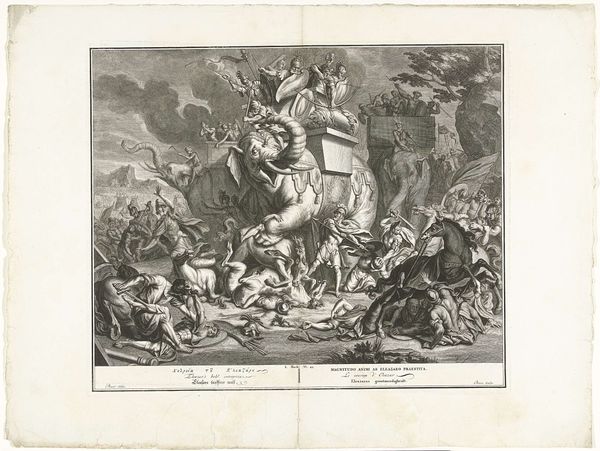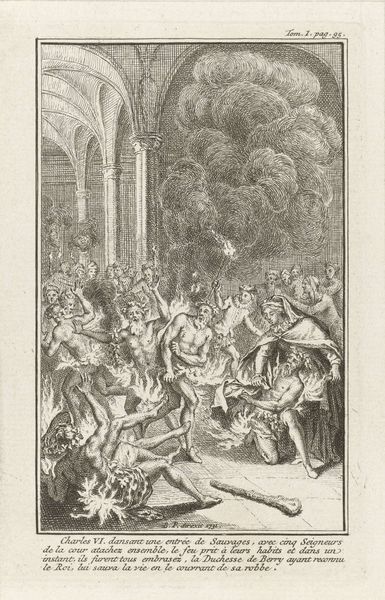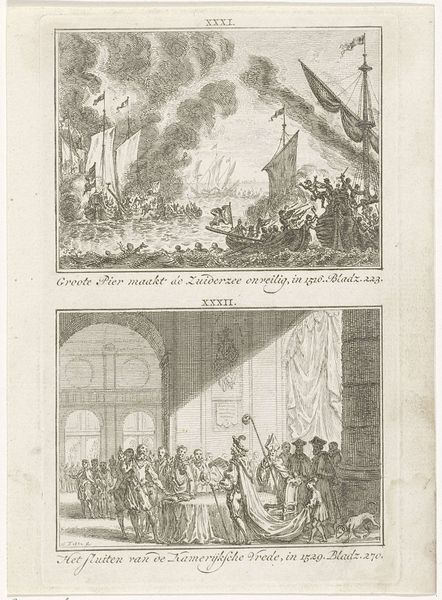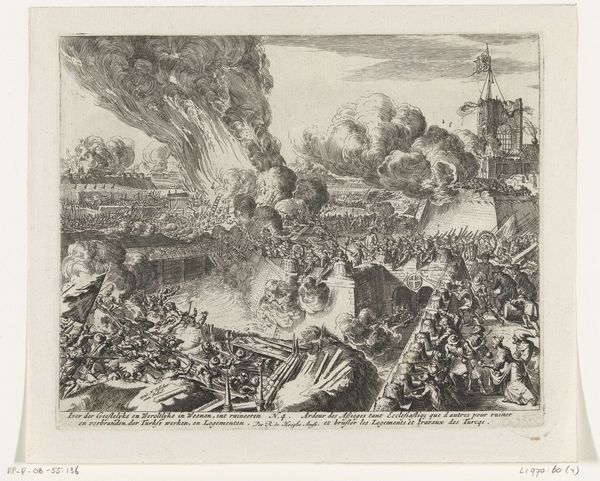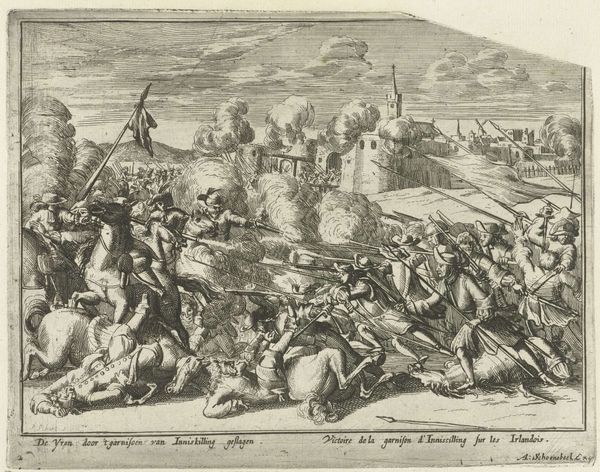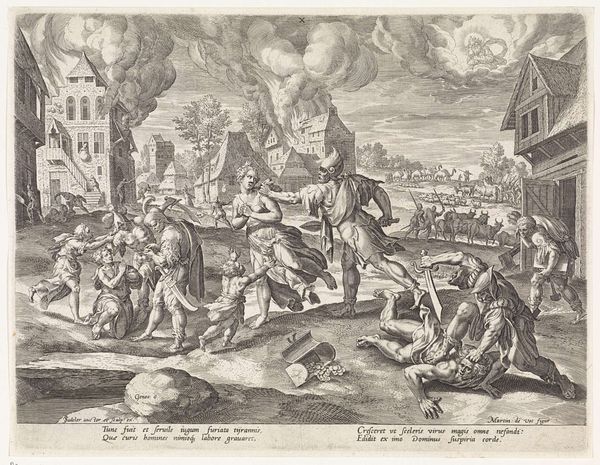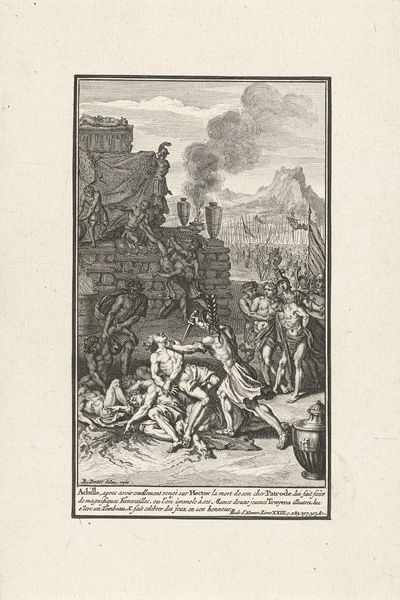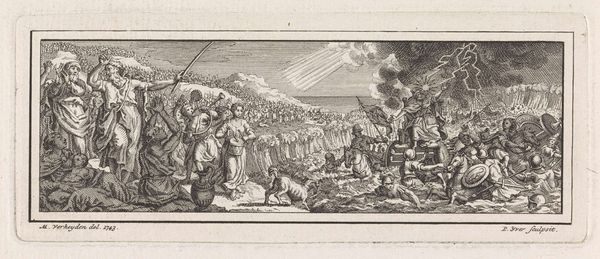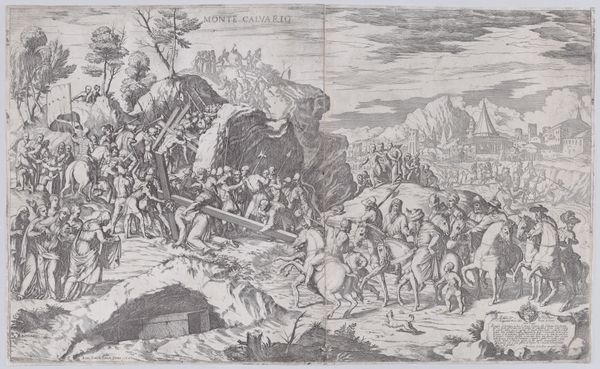
Johan en Cornelis de Witt uit de Gevangenpoort gehaald en gedood, 1672 1782 - 1784
0:00
0:00
simonfokke
Rijksmuseum
Dimensions: height 85 mm, width 107 mm
Copyright: Rijks Museum: Open Domain
Curator: Let's discuss this evocative engraving, "Johan en Cornelis de Witt uit de Gevangenpoort gehaald en gedood, 1672" by Simon Fokke, dating from 1782 to 1784. It's currently held in the Rijksmuseum's collection. Editor: My initial impression is chaos. The composition is incredibly busy, the eye struggling to find a resting place amid the throng of figures and billowing smoke. The tonal range is quite narrow. Curator: Indeed, the limited tonal variation of the etching, along with the density of line work, intensifies the overall drama. The artist masterfully uses hatching and cross-hatching to model the figures and create depth, but the effect also contributes to a sense of claustrophobia and frenzy. Consider the orthogonals – how the crowd surges into the pictorial space. Editor: I'm struck by the symbolic weight of the scene. We are witnessing a pivotal moment in Dutch history, a stark representation of political violence and the fragility of power during the Rampjaar or disaster year. Curator: Precisely. The public assassination of Johan and Cornelis de Witt, two prominent statesmen, represents a turning point in Dutch politics. The artist successfully uses this scene to highlight social unrest with dramatic figures. Editor: Note also the choice of medium. The engraving, with its inherently reproductive nature, served to disseminate this gruesome scene widely, solidifying its place in the collective historical consciousness. One sees the beginnings of proto-journalistic practices at play here. Curator: Furthermore, think about the cultural context in which Fokke created this work, over a century after the events depicted. There's a layer of retrospective interpretation, an attempt to grapple with the legacy of this violent episode and the political tensions that it represented. Editor: I agree. We might read the density of the composition itself as a metaphor for the complex and volatile political climate that fueled the De Witt brothers' murder, how it consumes all rational perspectives. Curator: Ultimately, the piece acts as a complex document with significant historical and artistic value, immortalising a very somber chapter in Dutch history, wouldn't you say? Editor: I concur; its strength lies in its very stark and rather unforgiving aesthetic, allowing for very little interpretive generosity on the viewer’s part.
Comments
No comments
Be the first to comment and join the conversation on the ultimate creative platform.
